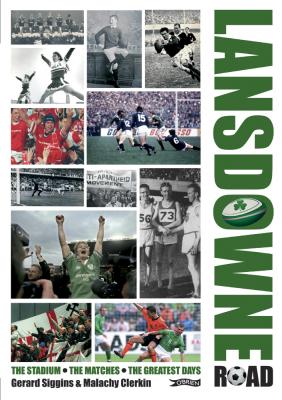
And for the first 20 years cricket was a vital part of the mix as Ger Siggins explains in this exclusive extract from Lansdowne Road: The Stadium, The Matches, The Greatest Days.
Back in August 1874 cricket was still arguably the most widely played game in the land. Henry Dunlop had ambitions to challenge the supremacy of the Trinity club in its staging of lucrative annual matches against touring sides and English counties, and teamed up with publisher and sports goods seller John Lawrence to invite over the London Imperial Clowns for games against Eleven Gentlemen of Ireland.
It was a raucous Victorian version of Twenty20, with the Clowns being actual circus performers, augmented by some useful professionals. The Gentlemen of Ireland was a strong selection, with several of the best players of the day, including celebrated scholar and wit JP Mahaffy, who taught Oscar Wilde; and Leland Hone, who later played test matches for England. The play was interspersed with musical interludes while the Clowns entertained the audience with acrobatic fielding.
The Irish Times man was unimpressed: 'Many lovers of cricket objected to their game being burlesqued, and consequently absented themselves from a match where they expected nothing but buffoonery.' Not quite so generous was the man from Saunders Newsletter, who thought 'We may content ourselves now by hoping we ne'er may look upon its like again. Buffoonery, through the medium of cricket, may amuse the village Yokels, or create a laugh in the circus, but we doubt much whether Irish gentlemen will again be found arrayed against such competitors in such costume.'
Sadly for Lawrence, there was little spectator interest in such frivolity either, and the weather was no help: the attendance was described as 'wretched'. He lost £100 on his promotion, which was not repeated. Ironically, Dunlop's rivals at the Leinster club put up a purse to attract the greatest cricketer of the age, W.G. Grace, who brought a huge crowd to Rathmines for a proper match a few weeks later.
Dunlop made strong efforts to establish a permanent cricket club at the ground. Lansdowne CC lasted several years but never reached the front rank in Dublin circles.
The stars of the early sides were the Exham brothers from Cork, who later found sporting fame in England. Arthur Exham took an impressive seventy-five wickets in the 1876 season, while Percy made one of only two centuries scored for Lansdowne, against Leinster at Rathmines. Percy was an excellent all-round sportsman who played football for Derby County and cricket for Derbyshire. Other notable members were internationals Horace Hamilton from Carlow and Freddie Lambkin from Cork.
Lansdowne were not immediately granted fixtures by the leading local sides - Leinster, Phoenix and the University - but eventually worked their way up the pecking order. By 1879 they were heavily praised in Lawrence's annual for becoming competitive and having a good crease and abundant room. The pitches played better too, with more scores over a hundred, including one of 225 made against the leading Phoenix club.
However within a couple of years it was struggling, having lost 'its oldest and best members'. By 1881 the club was only able to play five games, compared to twenty-seven the year before, and all of them 'away' games. The committee complained it was 'unable to get use of the ground as in the past', and that the wickets were in a very bad state.
In 1884 Jack Hynes scored the only century recorded at the ground. Hynes also played for Trinity and Phoenix and won twenty-seven caps for Ireland. He was the most significant player of his day, labeled 'the champion bat of Ireland' by Wisden after scoring 113 for MCC.
The club fell away in the 1890s, but the ground continued to be used for cricket, with Sandymount CC establishing a home there before it folded around 1907, while schools and junior clubs also hired it out. The sport generally went into steep decline after the First World War and there was little played at Lansdowne Road.
The Irish Times staff XI played its junior league games on the back pitch throughout the twenties, but the last cricket match was played there in 1930.
Lansdowne Road: The Stadium, The Matches, The Greatest Days by Gerard Siggins and Malachy Clerkin is published by O'Brien Press (€17.99)
